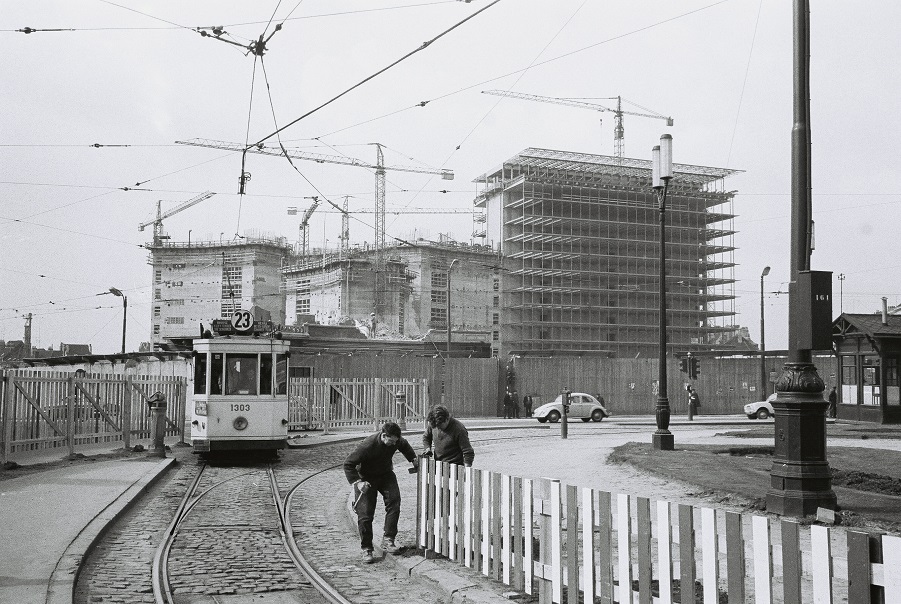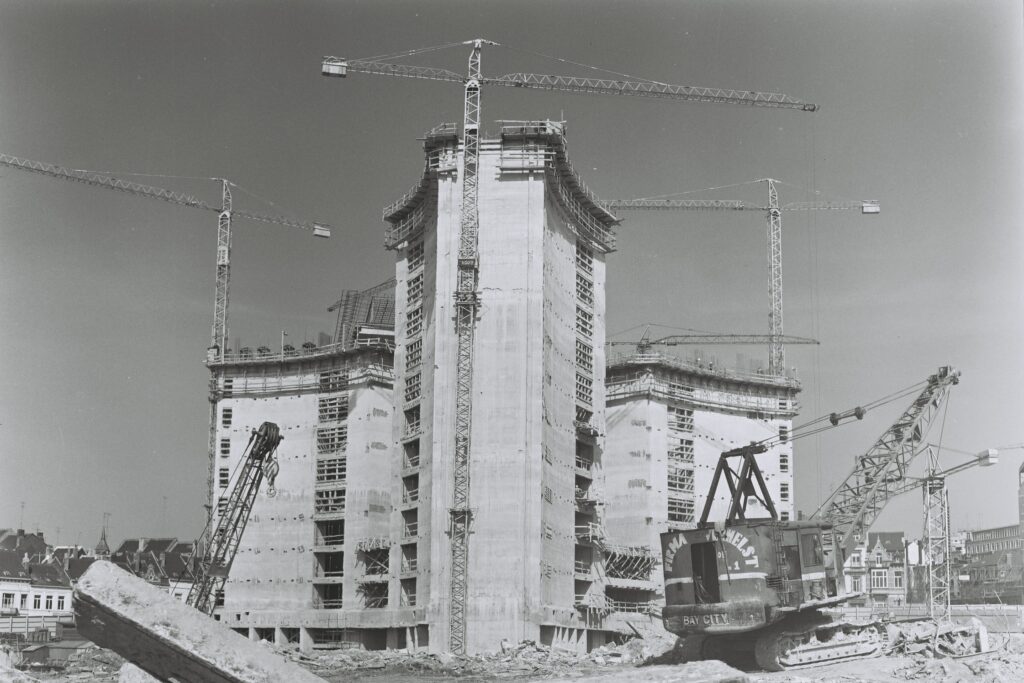Once again it is Belgium’s turn to hold the European presidency. It is, however, most unlikely to have such a formidable impact on Brussels’ destiny as when Belgium played that role in 1958, in the first semester of existence of the European Economic Community.
Philosopher Philippe Van Parijs reflects on current debates in Brussels, Belgium and Europe
Stalemate and alphabet
Several cities were candidates for hosting the institutions of the new Communities. One of them was Brussels, which had proposed the Heysel site. But no consensus could be reached. On 1 January 1958, the first civil servants were ready to work, but they did not know where their offices would be. An emergency meeting took place in Paris on 6 January but did not manage to break the stalemate. Who was to be in charge of finding a provisional solution?
The rotating presidency provided the answer. The European Economic Community was to be chaired in turn, semester by semester, in alphabetical order, by the foreign ministers of the six member states: België/Belgique first, to be followed by Deutschland, France, Italia, Luxembourg and Nederland. A few months earlier, Victor Larock had taken over as Belgium’s foreign minister when Spaak became NATO’s second secretary general. He was therefore the man in the uncomfortable driving seat.
As an emergency measure, he initially housed the first squad of EEC fonctionnaires on rue Belliard, in the recently vacated premises of a Belgian ministry. As a less precarious solution, he targeted an office building under construction on rue de la Joyeuse Entrée, next to the Cinquantenaire Park, property of the Royale Belge, an insurance company that would later be absorbed into AXA. The staff of the EEC’s Commission moved in in the summer of 1958. (This building no longer exists. It was demolished in 2006, along with the rest of the block, by then also AXA’s property, to make way for the current seat of the European External Action Service.)
By the end of the year, the consensus regarding the choice of a definitive seat was no greater. Charles de Gaulle had become president of the French Republic, and the idea that the petite Europe’s only metropolis, Paris, would provide an ideal seat for the new institutions seemed as credible in France as it was unimaginable elsewhere.
The Berlaymont as a powerful magnet
The Belgian government therefore realized that the uncertainty would last for a long time and that far more office space would soon be needed. In December 1958, it decided to acquire the convent of the Dames de Berlaymont, at the far end of the rue de la Loi, also close to the Parc du Cinquantenaire. Thanks to the spacious garden, there would be no need to destroy too many houses in order to make room for a huge office building, which could conceivably be turned into a Belgian ministry should the European institutions decide to leave Brussels.

The construction of the Berlaymont building
The construction of the Berlaymont building started in 1963 and was completed in 1969. The building itself provided offices for 3000 civil servants and its car park space for 1600 cars. Even before its full completion, a private developer had erected the Charlemagne building next to it, which initially hosted the EEC Commission staff waiting to move into the Berlaymont.
This was the start of a formidable snowball process, first hesitating, then unstoppable, with the Berlaymont building operating as a powerful magnet. In January 1967, the executive of the European Coal and Steel Community merged with the EEC Commission and moved from Luxembourg to Brussels as the common “provisional” seat of a single European Commission. With successive enlargements and expanding powers, more and more office space was needed. In the absence of a decision about a permanent seat, no planning was possible and anarchy prevailed, with private developers eagerly building ugly office blocks in the neighbourhood and renting them out to the Commission.
The Council and the Parliament follow
As the presence of the Commission in Brussels was swelling, the other European institutions realized that what was supposed to still be “provisional” was most likely to become permanent. Initially housed next to Brussels’ Central Station, the Council of Ministers had moved to the Charlemagne building in 1969 when, following the completion of the Berlaymont, the Commission no longer needed it. But the Council of Ministers wanted something far bigger and potentially permanent. After much controversy, it opted for a site across the rue de la Loi, immediately opposite the Berlaymont, where a small rue Juste Lipse had once stood. The construction of the Justus Lipsius building started in 1989 and the Council of Ministers moved in in 1995.
In the meantime, the European Parliament, officially based in Strasbourg and elected directly for the first time in 1979, decided to hold its committee meetings in Brussels. In 1981 it acquired for this purpose the building on rue Belliard that is currently occupied by the Economic and Social Committee. In 1987, a private consortium started building a congress centre on the site of an old brewery next to the Brussels-Luxembourg station, allegedly completely unrelated to the possibility that the Parliament might one day move there. In November 1990, however, its president Enrique Barón Crespo expressed the Parliament’s wish to rent and later buy the complex.

Aerial view of the Berlaymont, the Charlemagne, the Justus Lipsius and the Europa building
At the December 1992 summit held in Edinburgh, the “provisional” character of the seats was finally lifted. Brussels was confirmed as the official seat of the Commission, the Council and the Economic and Social Committee, and Strasbourg as the official seat of the European Parliament. However, some of its plenary sessions and all of its committee meetings would be held in Brussels. As a result, the countless lobbies keen to interact with MEPs knew that Brussels was the place where they had to settle.
Consecration
But this is not the end of the story. For the European Union, as it became called after the 1992 Maastricht Treaty, was still living with the fiction of a rotating capital, with the European capital moving from one member-state to another, semester after semester, together with the presidency. This came to an end in December 2000, in the corridors of the Nice summit. It was agreed that, from the 2004 enlargement onwards, the four regular summits of heads of government should all be held in Brussels.
This agreement made the European Commission, then chaired by Romano Prodi, bold enough to ask a group of European intellectuals to think about “Brussels Capital of Europe” and to publish their conclusions under that title in October 2001. Soon afterwards, it agreed to having a permanent poster exhibition entitled “How Brussels became the capital of the European Union” on the glass panels surrounding the thoroughly renovated Berlaymont building.
A final step still needed to be taken. Until then, the European summits had still been chaired by the head of government of the country holding the rotating presidency. In December 2007, however, the Lisbon Treaty created the job of “permanent” president of the European Council, to be based in Brussels. The first incumbent, Herman Van Rompuy, started on 1 January 2010. With all regular meetings of the European Council being held in Brussels and its permanent president based there, the myth of the rotating capital was now completely dead and buried.
The construction, next to the Justus Lipsus, of the lantern-shaped Europa building, began in 2011 and was completed in 2016. By providing permanent headquarters for the European Council and its president, it amounted to a tangible consecration of Brussels’ status as the uncontroversial political capital of the European Union. Brussels did not acquire that status because of a consensual decision to select it as the most appropriate location for the European institutions. It acquired it by stealth, in stoemelings as the Brussels dialect puts it, because of the inability of the six founding member states to reach a consensus — a consensus which became even more elusive as membership grew to nine, twelve, fifteen, twenty-five, and even, for a while, twenty-eight member states.
Thus, a trivial fortuitous fact — Belgium starting with the letter B —gave rise, first quite timidly, and then with growing confidence, to a massive, irreversible fait accompli.

